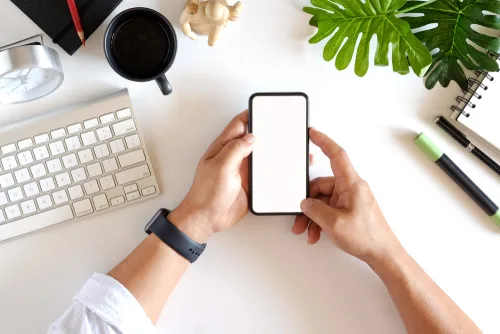The advance of contactless access technology
Futuristic visions date badly over time. Reality has a habit of catching up, and the speed of progress is accelerating.
It was not so long ago that sci-fi movies would include magical doors that opened on the command of a voice, eye scan, or facial recognition. None of these hold any mystique now, and such technologies are so accepted that contactless access is now being seen as a must-have by businesses, especially with a global virus still on the loose.
In times of a pandemic, avoiding the touching of locks, handles or doors has become an everyday aspect of self-preservation, but the advantages of access control systems run far beyond Covid caution.
The most obvious upside to touchless access control is the enhanced security. A key, whether an old-fashioned Chubb or a card, can be replicated or stolen. Conversely, the software behind touchless technology means that an individual can be recognised and verified through their unique physical features.
And this personalised recognition means you can monitor exactly who is in a building at any one time.
Contactless access – then
While the benefits were easy to understand, the biggest blocker was the limitations of the technology itself. The quality of the technology was okay if you had the budget to invest in top of the range hardware and software. Contactless access has long been utilised by banks and secure facilities. Since 2011, Google has used iris scanners to control access to its datacentres.
For the rest of us, it was not so attractive.
Contactless access is there to make lives easier and allow instant entry to the verified people. But when the kit was glitchy, it was more trouble than it was worth.
Facial recognition could fail if someone gained (or lost) facial fair, wore sunglasses or a hat, or if the lighting was poor. There were even instances of people gaining access by holding up a photo.
Voice recognition could fail with regional accents or if a person was feeling unwell and had a croaky voice or a blocked up nose.
Iris recognition would often be unable to cope from more than a few metres away. And people would baulk at the idea of beams being shined into their eye.
In short, contactless access created more problems than it solved.
But the speed of change has been like a whirlwind. Just think of the phone you carry around, day and night. There was no iPhone until 2007, and the first model was primitive by today’s standards. The original iPhone had no maps, no app store, and could not film video – plus, the internet connection was snail-like and the camera quality was appalling.
Just as phone technologies have enjoyed revolutionary development, so have contact access technologies – and they are now available to all, not just Google and multinationals.
Contactless access – now
The access solutions available now are reliable, safe, secure, and cost-effective – and there are plenty of options…
Wave your way in. As long as you have your smartphone with you (even in your bag), this solution just needs a simple wave of the hand. The reader senses the hand gesture and triggers a Bluetooth low energy (BLE) connection with your phone. BLE is different from conventional Bluetooth in that it remains in sleep mode constantly except for when a connection is initiated.
Show your phone. Much like paying with contactless, by placing your phone near the reader, an app will open – tap a button and away you go. Readers will use BLE, Wi-Fi or cellular data to connect, so poor Wi-Fi connection is not an issue.
Card, fobs, or keys. A bit old school, but these devices can all work well with contactless technologies.
Face recognition access / Iris recognition. All of the above options rely on third party devices, whether phones, fobs, or cards. Facial or iris recognition is a far more secure method. Unless someone wants to undergo lengthy and very expensive plastic surgery, there is no way they can steal your unique physical appearance!
Safety & Security
We have lived with Covid for a long time now, and while we are all craving more social interaction, no one wants to be struck down with it. If there are ways where risks can be reduced without restrictions on our everyday activities, then these will always be welcome.
A contactless access system is a non-invasive method of infection prevention. The coronavirus can survive on plastic or stainless steel as a functional and infectious virus for up to three days.
The most prevalent method of transmission is from person to person in a confined space, but it is certainly possible to contract Covid from a contaminated surface – along with other viruses. Anything that helps keep us safe, is worth doing.
From a security perspective, a facial or iris recognition system is a powerful and effective tool against criminal activity. The software and video technology means that you will know who is in a building at any one time. And stealing an access card is not enough to get into a building.
As well as preventing theft, a secure door system offers protection and reassurance to the staff inside, who may be working evening or night shifts.
A secure contactless access system offers peace of mind to the business and the employees.






